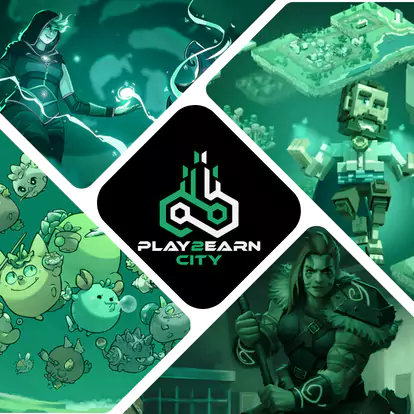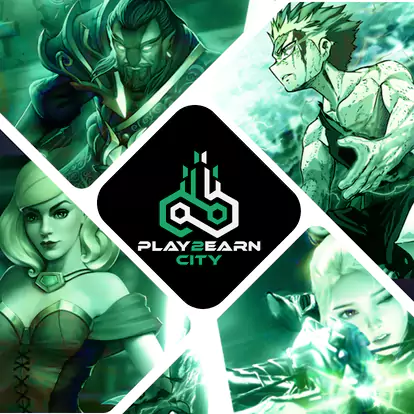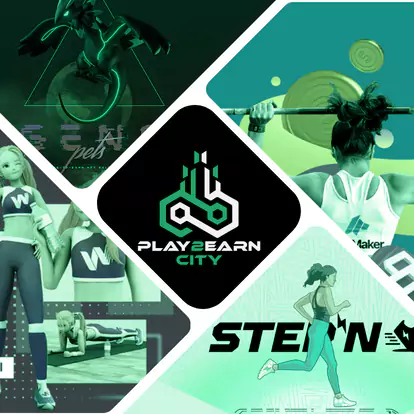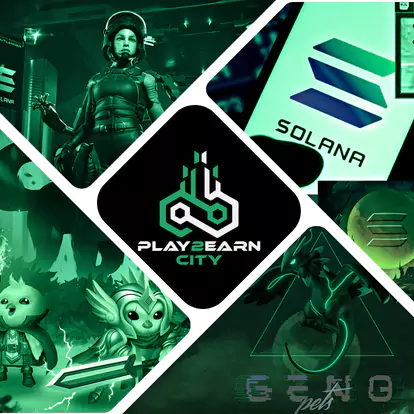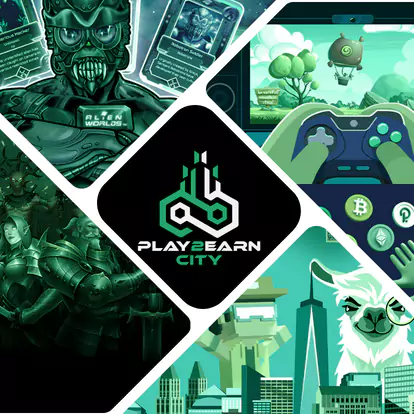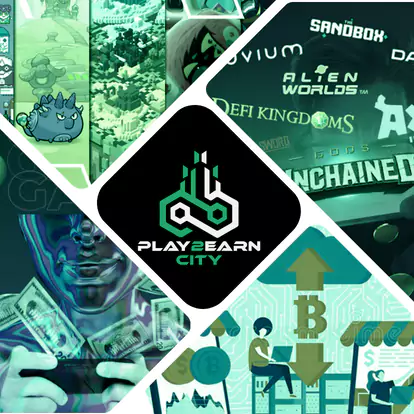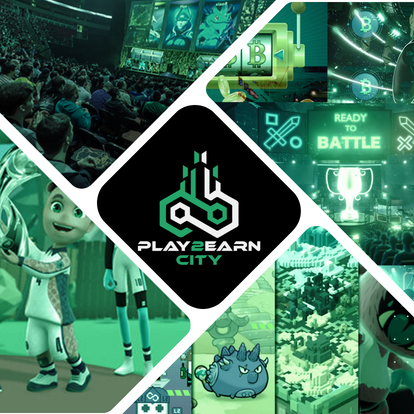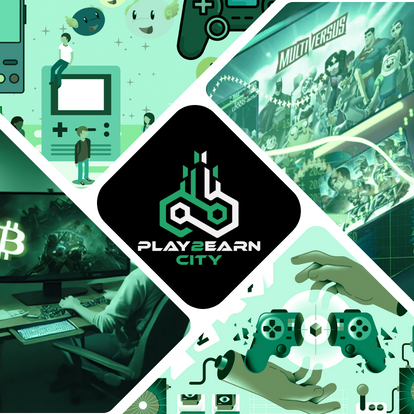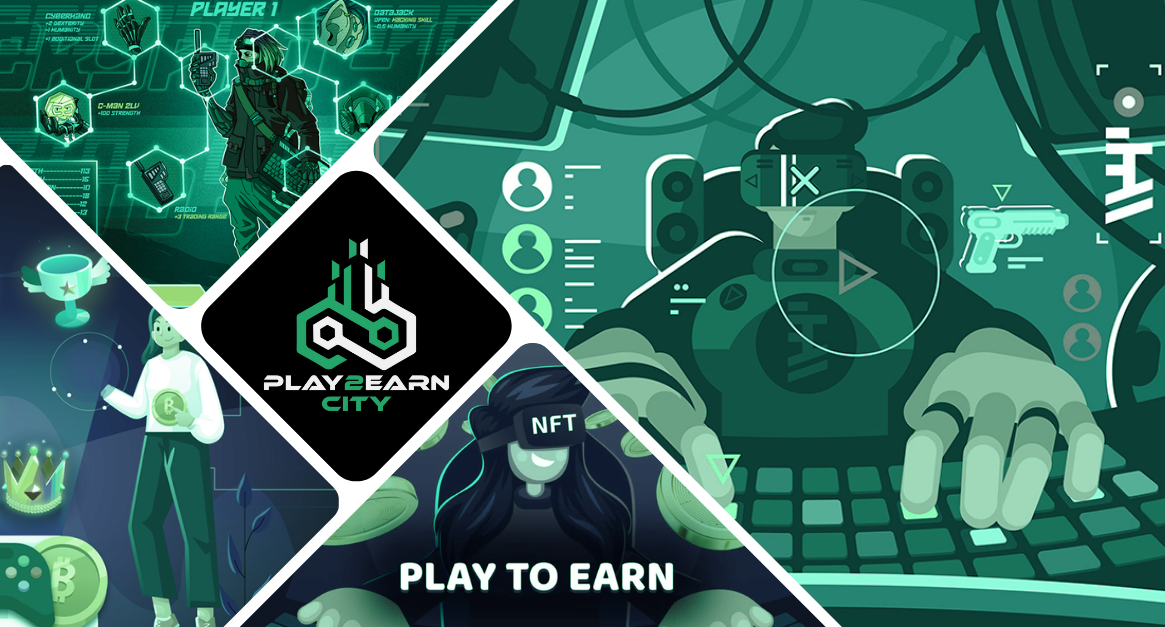
Blockchain gaming: What is it?
Like the technology that underpins cryptocurrencies like Bitcoin and Ethereum, "blockchain gaming" refers to video games that allow players to have legitimate ownership over in-game assets. It's a revolutionary step forward for gamers who have come to embrace the permanence of their in-game possessions. Players are used to "walled gardens," which limit their ability to freely trade resources in and out of the game but blockchain gaming secedes this limitation using blockchain elements like NFTs.
NFTs are something you have probably heard of, given that 2021 saw the emergence of the virtual asset bubble, and NFTs were the buzzword of that year. You can think of them as digital assets with ownership certificates that cannot be falsified. Nothing you upload or store online may be considered yours in ownership through and through.
Everything you have in digital form is just data stored on the company's servers, which might all be deleted at any time. However, with NFTs, users can "mint" their own individual, immutable tokens on the blockchain. Decentralized trust and immutable ownership are made possible by encrypting each record.
Since December 2020, NFT trade volume has increased from $135 million to $64 billion. This is huge for gaming. Last year, the blockchain gaming market increased by 2000% and attracted investments worth $2.5 billion or more.
Should You Invest in Crypto Gaming?
Since game-type cryptocurrencies have demonstrated considerable gains in recent years, they may benefit anyone using web3 or blockchain gaming services even when utilized outside of their original platforms.
There is no guarantee that future results will be similar to those of the past, and most players don't learn about new game assets until after they've already enjoyed significant growth. In such a dynamic market, picking the next big thing will require a mix of chance, luck, and thorough research. So, while putting funds into gaming tokens and other cryptocurrencies could pay off in the long run, doing so would be highly speculative.
Although blockchain gaming is pretty new in the entertainment sector, it has a large role in advancing Web 3 across various sectors. Robbie Ferguson, the cofounder of Immutable X, a layer2 scaling solution, seems to be of the same thought process as he told Forkfast that the gaming industry would be "very hit-driven" over the next few months and blockchain gaming will likely remain a crucial driver for greater adoption of Web 3.0.
Here are Seven Things You Should Know About the World of Blockchain Gaming
-
Play-to-Earn Games Have the Power to Transform Lives
Blockchain gaming allows users to earn cryptocurrency as they play. For many gamers in developing nations, this is rapidly becoming a viable alternative vocation. The Philippines has a 20% acceptance rate for blockchain games and has 40% of the Axie Infinity player community.
In some circumstances, Filipino gamers make twice or triple the local minimum wage. Argentina and Brazil, two LATAM nations, are far behind (Decentral Games, one of Argentina's top game sites, ascribed this to both countries' high inflation rates). This shows that having sustainable tokenomics goes a long way, especially for game producers.
Because of the wealth gap, it may be preferable to focus on growing a P2E audience in developing countries. Understanding the whitepaper for each project is becoming increasingly important for organizations and investors. Argentina and the Philippines, for example, both have promising economic futures that can serve as fertile ground for P2E gaming models.
-
NFT Gaming Will Add Value
NFTs can be used on blockchain gaming platforms to access new content or improve levels already beaten. According to KokoSwap's Chris Clarke, "if the player is putting their worth into the game, it just makes full sense that they may take this value out of the game."
And with the advent of the Quartz platform and the Digits NFT for use within games, Ubisoft has shown that it also shares this stance. This is significant because NFTs may facilitate the growth of a secondary market for software and other forms of digital content.
When using NFTs, players can acquire complete control of an in-game item, allowing them to do whatever they like with it, including selling, trading, or simply holding onto it. NFTs are more dependable and flexible, even if the idea of players getting income from games is familiar.
-
Players Have Total Control
As was already said, gamers are accustomed to purchasing in-game items through season passes and microtransactions. However, NFTs allow players to have greater agency in the game by trading or selling items for in-game currency or even making a profit on the secondary market. Those who grew up in the period of trading in their games for new ones will find this relevant in the digital gaming era.
Limited-time skins are currently available in games like Fortnite and EA Sports FIFA. The developer is in charge of the game's skins and item scarcity. Players can manage the selling and resale of goods with NFTs. If you joined FIFA Ultimate Team late and missed the first kits, you will be able to purchase the season's first kits from other players.
Players have the option of purchasing NFTs of new talents or experience points (XPs) in addition to in-game items. Using the FIFA Ultimate Team as an example, players might earn crypto tokens by building distinctive teams and selling them to other players on an NFT marketplace.
-
NFT Games can Accept any Potential Player Ownership.
This Ultimate Team illustration brings up a significant topic that worries devoted players. Gamers with significant bankrolls could just purchase a fantastic premade team, win trophies, receive NFTs as rewards, and never look back. In other ways, NFTs might bring out the worst elements of traditional football as the wealthiest clubs' "prosperity."
However, NFT gaming can also welcome any ownership that players may bring. The concept of customization is fundamental to many games; this concept might be broadened to allow developers to create NFT-powered assets for their favorite games and sell them in a marketplace.
This might include, for instance, projects and fan art related to video games. To give fans a place to submit their original work, platforms like the GameStop NFT marketplace may be helpful in this situation. However, doing so would require publishers to cede some control over their intellectual property to gamers.
-
Metaverse Games Will Lead the Universe.
For players who seek the advantages of blockchains and the metaverse, NFT-powered games like Splinterlands and Axie Infinity are ahead of the curve. The metaverse will include games as one of its components, and NFTs will act as the connecting thread in our interconnected, digital future.
What is the metaverse, if you're still wondering after reading that sentence?
The Metaverse is one thing or location to some, like Meta, but it will probably be more than just a posh Zoom call. The metaverse will be housed on numerous platforms, games, and websites and dispersed throughout the internet. Activision Blizzard's recent acquisition by Microsoft suggests that there may be a Microsoft metaverse run via Game Pass.
-
Fitness Games can be Reinvented.
Envision a world where NFTs enable you to earn cryptocurrencies for working out. Move-to-Earn games are based on this premise. StepN is the first M2E game, and it gives out NFT badges in exchange for reaching step goals like the Couch tokens.
As an indication that game developers are starting to consider the broader impact of their creations, StepN is based on the carbon-neutral Solana blockchain. Genopets, an augmented reality application for mobile devices like Pokémon Go, provides free mints to new users.
-
NFTs Will be the Next Kick Starter
Crowdfunding is not brand new. Fans have had the opportunity to assist in the launch of games through Kickstarter for some time now, but the incentives are frequently your name in the game and the opportunity to play it first.
Independent game developers can support their projects by selling in-game items as NFTs through the NFT platform GameStarter. It entails that players can choose an independent game, contribute to its funding, and acquire a stake in it.
When the game debuts, GameStarter will also have an on-platform market and a token ($GAME) for trading NFTs for in-game items. By using the GameStarter route, a community can be established before a game's release, giving developers more time to express their creativity.
This is just one instance, but GameStarter suggests a future in which gamers may turn into investors and acquire NFTs for a portion of a game. For this to take off, some UX love will be required, along with a clarity regarding the dangers, as it is with much of the new world of NFTs. However, NFTs might add a completely new level of crowdsourcing for video games.
Top-three Blockchain Games to Explore Your Options With
After going through all seven reasons about how the blockchain gaming world ticks and what lies in store for the sector in the nearest future, you might want to test the waters with a couple of options that’ll expand your view and show you first-hand what blockchain gaming offers.
You can visit Play2Earn City for a more comprehensive list accompanied with an all-you-need-to-know about trending blockchain games on the market. For now, let's review these three: Decentraland (MANA), The Sandbox (SAND), and Axie Infinity (AXS).
Decentraland (MANA)
Decentraland, one of the most well-known examples of a metaverse, opened in February 2020. Recent media attention has focused on Decentraland, and since the project's launch, its popularity has skyrocketed thanks in large part to the creators' creative use of NFTs in the game.
The Sandbox (SAND)
The Sandbox is a popular NFT gaming platform where users may create and exchange virtual assets in a voxel-based metaverse. Players have the ability to trade, create, and sell voxel assets in this game. You might think of it as a game like Minecraft or Roblox but built on the blockchain. The sites provide resources for making and animating items, which may then be traded in online markets. Additionally, the platform allows users to make and play their own video games.
Axie Infinity (AXS)
It could be argued that Axie Infinity is the most successful and profitable NFT game ever. Axie Infinity takes inspiration from the popular Pokemon video game series but adds a blockchain-based twist that makes the game even more engaging. Dueling is the primary objective of this Ethereum-based game in which participants breed and collect NFT-based digital creatures called Axies.
Earnings potential skyrocket in direct proportion to the uniqueness and rarity of your Axie breeds. Axies can be traded on any number of NFT exchanges so long as they are recorded on the blockchain.
These games are excellent go-to options in a bid to explore blockchain gaming platforms.
Final Thoughts
Touring new planes and exploring fresh waters can be a tad bit overwhelming, especially when the knowledge of the concept seems far from reach. Blockchain games are relatively new concepts, and the need to completely understand their terrain is crucial for participation and adoption. This article has gone through seven things you might want to know about blockchain gaming and has answered your overbearing questions.

